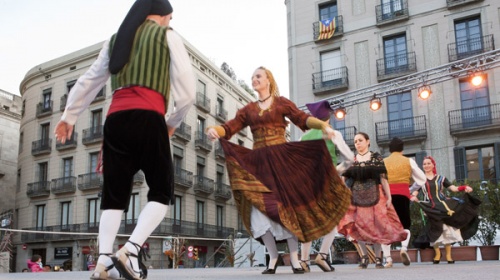Esbart Català de Dansaires
The Esbart Català de Dansaires is Catalonia's oldest active dance group. It was founded in 1908 as a split-off from the Esbart de Dansaires, which had been set up a year earlier and was wound up in 1909. The group's first president was the folklore specialist Aureli Capmany, who did an excellent job of studying popular dances with Rafael Tudó. From the outset, they compiled, studied and popularised traditional Catalan dance, as well as other things directly related to popular dances and customs. The group also organised and took part in civic, sports and cultural events with the same aim in mind. And they set up the Traditional Catalan Dance Archives and Library, both open to the public.
Although the initial project began in 1910, the Traditional Catalan Dance Archives really began to take shape in 1941, bringing together all kinds of documents on traditional Catalan dances: manuscripts, fieldwork studies, photographs, choreographic drawings, press releases, leaflets, programmes, etc.
The Library, meanwhile, has been collecting various items and publications in printed format, as well as sound recordings and videos, since 1926. The idea for the library came from another eminent folklorist, Joan Amades, the then president of the Esbart Català.
At the same time the group has also built up an extensive and varied wardrobe, so they can faithfully reflect the period and conditions the dancers represent, with costumes from the middle of the 18th to the end of the 19th centuries.
Since 1988 they have been arranging the Cafetera de l'Esbart Català de Dansaires, an annual series of talks and workshops on traditional dance, organised in nine sessions from October to June. Besides this, every Friday from October to May, they organise traditional dance sessions where anyone can go and practice.
On the streets they perform balls de bastons, cercolets, cavallets, rentadores and mocadors - stick, hoop, hobby horse, washerwomen and handkerchief dances - plus gypsy dances, court dances and exhibitions of dances from specific geographical areas. The musical accompaniment is provided by flabiol flutes and the double-reeded gralles.
In 2010, the Esbart Català received the Creu de Sant Jordi, the Cross of St George, from the Catalan government, the Generalitat, and in 2012 they received the City of Barcelona Popular Culture Award for their project "Apel·les Mestres, a complete artist and a multitalented man".




